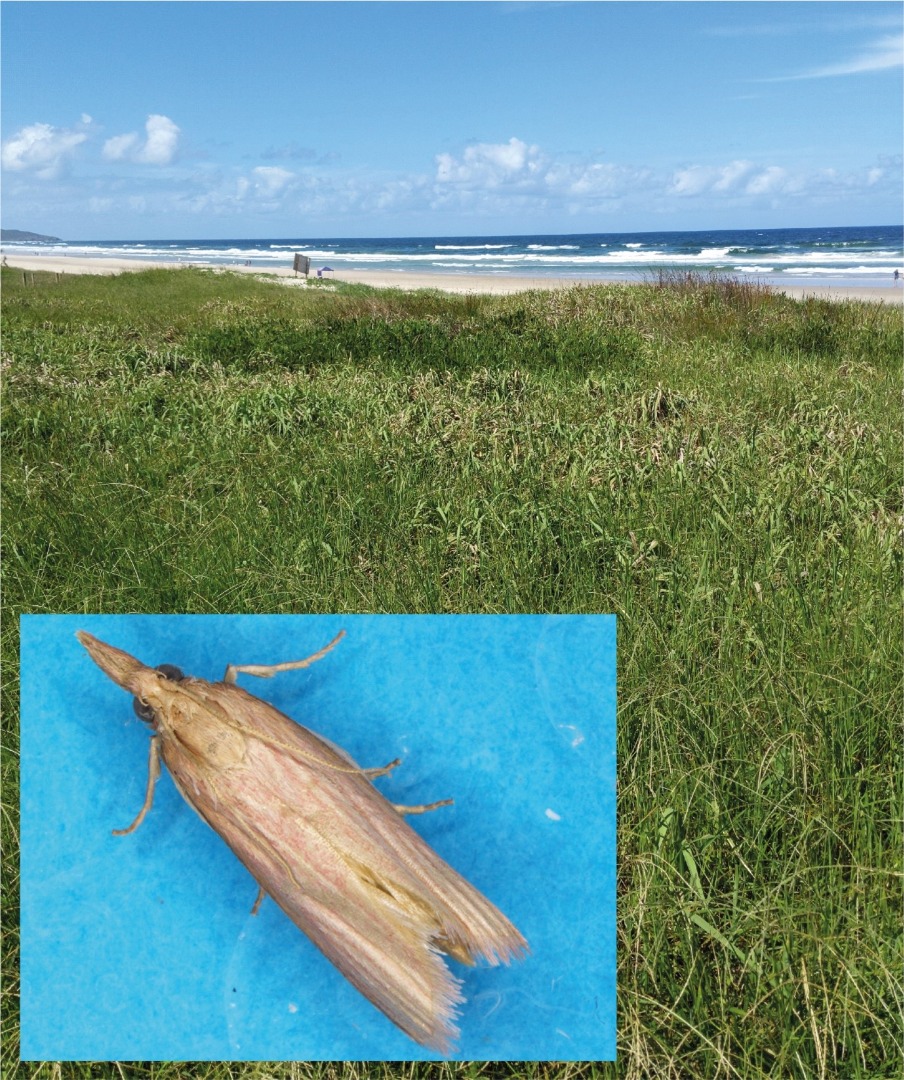Australian Biological Control Laboratory Sends First Potential Cogongrass Biological Control Agents for Host Specificity Testing
By Dean Brookes
Cogongrass (Imperata cylindrica) is numbered among the world’s top ten weeds and is a US federally listed noxious weed. The grass is one of the most problematic weeds in the southeastern US where it smothers native vegetation and increases fire intensity. Managing cogongrass with herbicide is challenging, in part, because much of its biomass is contained in dense mats of rhizome that are protected below the soil surface.
For about 18 months the USDA ARS Australian Biological Control Laboratory (ABCL) has been conducting native range surveys for herbivores of cogongrass in Australia. Surveys have also been undertaken in South Korea and Japan alongside our local collaborators and with Dr. Greg Wheeler from the USDA ARS Invasive Plant Research Laboratory (IPRL) in Fort Lauderdale, Florida . Several promising agents have been discovered, with the overall herbivore diversity much higher than anyone on the project team anticipated at the outset. Stem boring and rhizome feeding Lepidoptera, and shoot boring Diptera, have been the most promising early herbivore discoveries. Two species so far have passed preliminary host specificity tests at ABCL, and so in December 2023, were hand carried by Greg Wheeler (Figure 1) to the IPRL quarantine facility in Florida for thorough evaluation.
Emmalocera latilimbella is a stem boring moth that is widely distributed in eastern Australia, but most often in sandy dune scrub (Figure 2). Recent emergence of Emmalocera latilimbella in IPRL quarantine is an encouraging start to formal host testing. DNA barcoding of similar stem boring larvae from South Korea and Japan indicates that other Emmalocera spp. are potential agents for the project.
An unidentified Atherigona sp., also widely distributed in eastern Australia, oviposits on developing cogongrass shoots (Figure 3). A single larva develops inside each shoot and kills it. The fly can be incredibly abundant at some field site and infests a large proportion of new cogongrass shoots. Many other fly species have been discovered in cogongrass shoots in Australia which are still being identified and evaluated.
Native range surveys of cogongrass will continue in 2024, and expand into Southeast Asia. In Australia, the ABCL team will move on to rearing and evaluating a gall midge, a rhizome feeding moth, and a stem boring weevil. The prospects for a biological control solution to cogongrass are promising at this early stage of the project.
 Figure 1. Lunch with Greg Wheeler (IPRL) and some of the ABCL team during a trip to join ABCL surveys, and hand carry insects to Florida. Left to right: Ciara Horton, Bradley Brown, Greg Wheeler, Dean Brookes, and Jeff Makinson. Behind the camera: Christine Sanderson.
Figure 1. Lunch with Greg Wheeler (IPRL) and some of the ABCL team during a trip to join ABCL surveys, and hand carry insects to Florida. Left to right: Ciara Horton, Bradley Brown, Greg Wheeler, Dean Brookes, and Jeff Makinson. Behind the camera: Christine Sanderson.

Figure 2. Dune scrub where Emmalocera latilimbella is most frequently found, with an image of an adult moth inset.

Figure 3. Emerging shoots of cogongrass that are oviposition and development sites for this Atherigona sp., with an image of a female adult fly inset (scale 1 mm).
For inquiries regarding this article contact: Dean.Brookes@csiro.au.
USDA ARS Australian Biological Control Laboratory (ABCL) is based at the Ecosciences Precinct in Brisbane, Australia, and is administered through a Specific Cooperative Agreement between ARS and Australia’s Federal research body, the Commonwealth Scientific and Industrial Research Organisation (CSIRO). The agreement has been a very productive, mutually beneficial, long-term collaborative relationship originating in 1985. Assisting with solving U.S. problems is reciprocated by ARS through supplying Australian scientists with biological control agents from the America’s to control invasive weeds in Australia.
